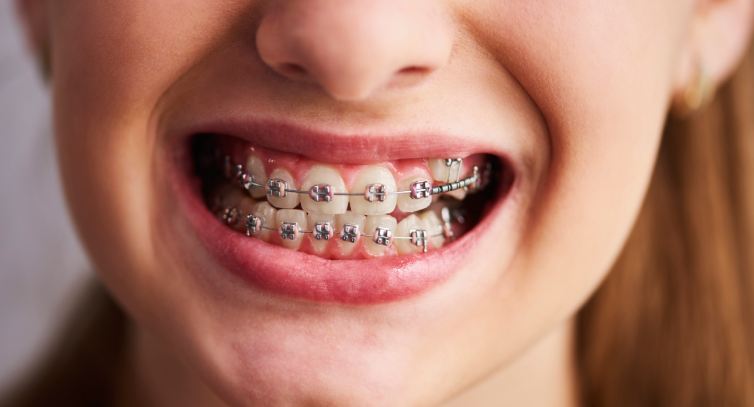What is a Gummy Smile?

A gummy smile is subjective since people have different perceptions about it. Generally, if three or four millimeters of gum tissue is exposed while smiling, it is considered a gummy smile.
-Again, it’s subjective, and what one person considers attractive is not the same for another. Opinions about what makes a smile attractive vary cross-culturally across time and among different age groups. Thus, it’s all in the eye of the beholder.
-Overall, such smiles may affect around 14 percent of women and 7 percent of men. Today, having a smile that reveals the gums can lead to feeling like you have to hide it. If so, orthodontic treatment can help you feel confident and proud of your smile.
-An orthodontist is a smile specialist who understands the complex relationship and ideal proportions of the jaw and teeth. So, if you are concerned about how your smile looks, reach out for BEST ORTHODONTIST IN PUNE at Smilex International Dental Care Centre
What Causes a Gummy Smile?
Before we treat a gummy smile, we need to identify the cause, which varies by individual.
For example, a gummy smile can be caused by
- Inherited traits related to how gums and teeth are proportioned
- Lip proportion and how lips move when you smile
- Jaw growth (maxillary excess) and malocclusions (misalignments)
- Medications and health conditions
Thus, the proper treatment will need to address which of these underlying causes is present.
Sometimes, an overgrowth of gum tissue called gingival hyperplasia can result from medications or poor oral hygiene. Then, treating the condition can help you avoid periodontal (gum) disease. If so, surgery or gum contouring can help.
Likewise, those with a short or hyperactive upper lip could consider lip repositioning surgery.
For many people, braces and other orthodontic treatments can “fix” a gummy smile without the need for expensive surgery, botox, or risky hyaluronic acid lip treatment.
Types Of Orthodontic Treatments For A Gummy Smile
Discussing your problem with Dr. Sonali Deshmukh is essential as she will identify the exact cause of your gummy smile and recommend the best treatment option for you. Here are four common types of orthodontic treatments to consider.

- Braces or clear aligners – Misalignment of the jaws and teeth can make your gums appear more prominent. Braces and clear aligners like Invisalign can help move your teeth and jaw to the correct position.
- Jaw surgery (orthognathic surgery) – This is an exclusive treatment reserved for severe cases like jaw protrusion or jaw overdevelopment.
- Gum contouring – This is a dental surgery that involves removing excess gum tissue and recontouring gums to display more of the teeth’s surface.
How Do I Know Which One Is Right For Me?
Choosing the right orthodontic treatment option is crucial because it helps you get the care you deserve. Remember that different gummy smile conditions require unique types of treatment. That is why you need to contact a local, licensed orthodontist to assess your situation and develop a viable treatment plan for you.
The orthodontist will consider your symptoms, cost, the severity of the issue, and of course, your personal preferences to select the option that meets your needs.
Furthermore, you should find a dental care provider with the right skills and experience to handle any type of orthodontic service. At Smilex International Dental Center, we have the needed expertise to treat a wide range of complications related to the gums, jaws, and teeth. We can fix your gummy smile in no time to induce confidence in your smile.
Orthodontic treatment in gummy smile of alveolar origin
Correcting gummy smiles may be an especially complex objective for the orthodontist. Only a moderate gummy smile of alveolar origin responds to isolated orthodontic treatment. Gummy smile of alveolar origin is generally associated with supra-occlusion limited to the incisor group. In vertically normal gummy smile, intrusion of the maxillary incisors is the treatment of choice. Moreover, except in particularly severe cases, gummy smile is rarely the prime target of orthodontic treatment. Rather, it is usually associated to correction of malocclusion, determining the treatment plan . Treatment can be undertaken at a very early age to prevent onset of supra-occlusion. Once gummy smile has emerged, there are orthodontic mechanisms to improve the relation between upper lip and teeth, reducing gum exposure. Conventional techniques can be used: e.g., Ricketts’ basal arch to achieve superior incisor intrusion. This intrusion, however, is difficult to obtain and is often accompanied by molar extrusion, which may not be desired, especially in hyperdivergent subjects with gummy smile. More recently, the development of mini-screw bone anchors has extended the possibilities of orthodontic treatment: anterior vertical excess found in adults can now be corrected by intrusion, limiting unwanted side effects in the posterior sectors by appropriate mini-screw positioning.
This technique is increasingly used to correct gummy smile in adults, as mini-screws combine several advantages: • easy of fitting and ablation; • immediate implementation; • patient comfort; • relatively low cost. It is an interesting alternative to the risks and demands of orthognathic surgery, the previous attitude of choice.
Orthodontic-surgical treatment of gummy smile of skeletal origin In some cases, isolated orthodontic treatment will not be enough to correct large excess anterior gum exposure, especially when of skeletal origin and extending beyond the premolars . Surgery, comprising total or segmental maxillary osteotomy, can improve the relation between the maxillary arcade and the upper lip. Lefort I osteotomy is usually performed, consisting in mobilizing the entire maxillary plate by resecting a band of bone tissue so as to achieve maxillary intrusion.
The treatment for gummy smiles will depend on what the cause of the problem is. For those that have excessive gum showing, it may seem due to their bit, or the position of their teeth and jaw bone. Correcting the bite with orthodontic services can help. dentist services such as Invisalign and braces has shown some success in helping to minimize the appearance of a prominent gum line. Some dental practitioners will use, in combination with braces, a temporary anchorage device. This device is an implant that is inserted into the jaw bone above the teeth to provide a fixed, more stable point to allow more force to be applied.
In more extreme cases, the dentist may have to perform orthognathic surgery to correct the problem. For those that have moderate to severe gummy smiles, the dentist will suggest braces a year before the jaw surgery and up to a year after to ensure the bite is “locked into place.” dentists offer clear aligners to fit the needs of each of the patients. dentists considers each patient’s unique needs and goals before recommending an orthodontic treatment plan. Once it’s done, your smile will be less gummy and your whole mouth will be healthier once your teeth are in alignment.
Braces can help with the excessive gingival display, in cases where the issue is related to jaw and teeth position issues and in milder cases. But they aren’t the only solution and won’t work for everyone. Treatment is based on the way. So for some patients gingivectomy, veneers, crown lengthening, or Botox may be used.
orthodontic treatment is effective method for treating gummy smiles due to a bad bite. Over time, your teeth are slowly repositioned to an ideal, symmetrical bite with braces. When your teeth and bone structures align properly, your gums appear flatter, more even, and less pronounced get your gummy smile treated by BEST ORTHODONTIST IN PUNE at Smilex International Dental Care Centre.


Leave a Reply